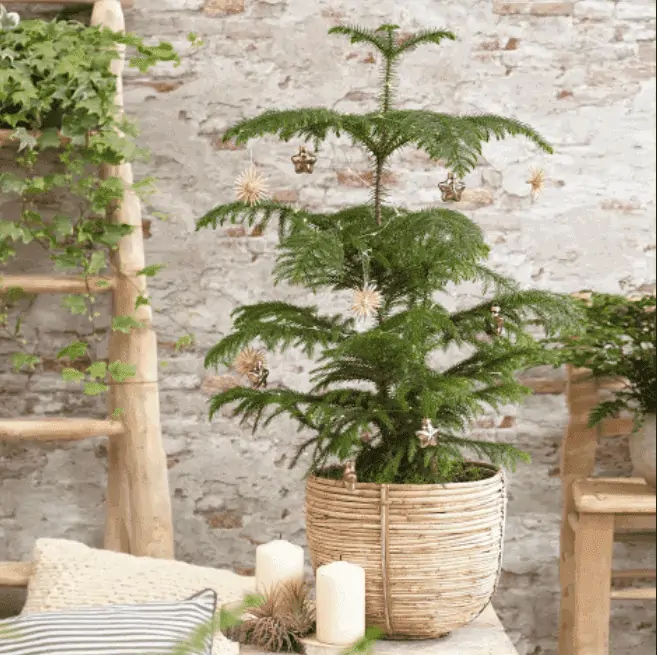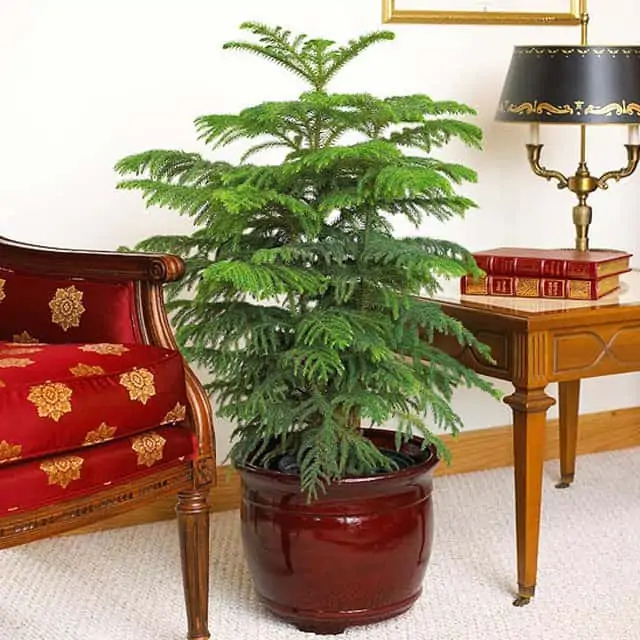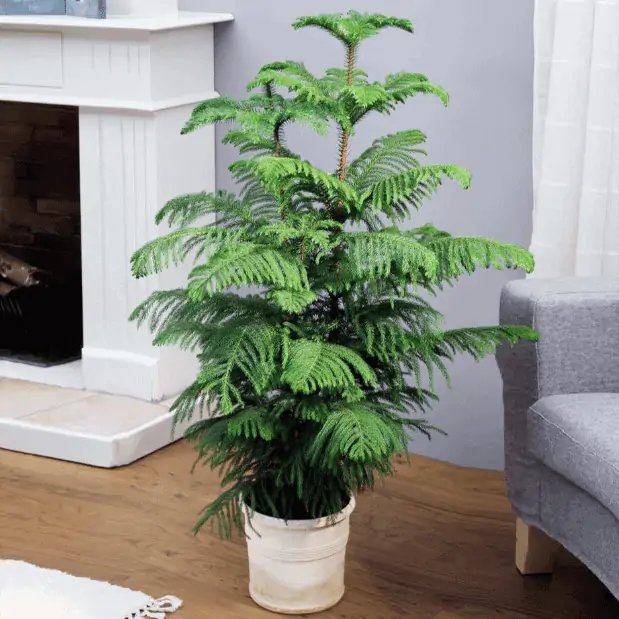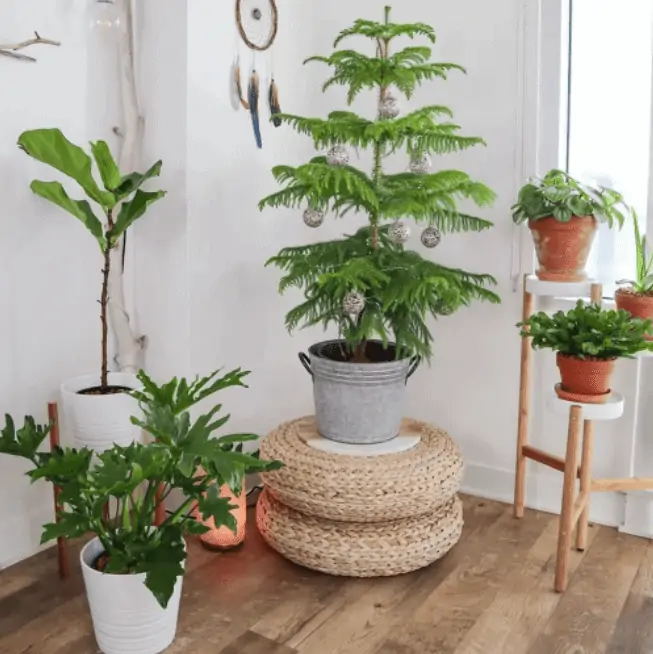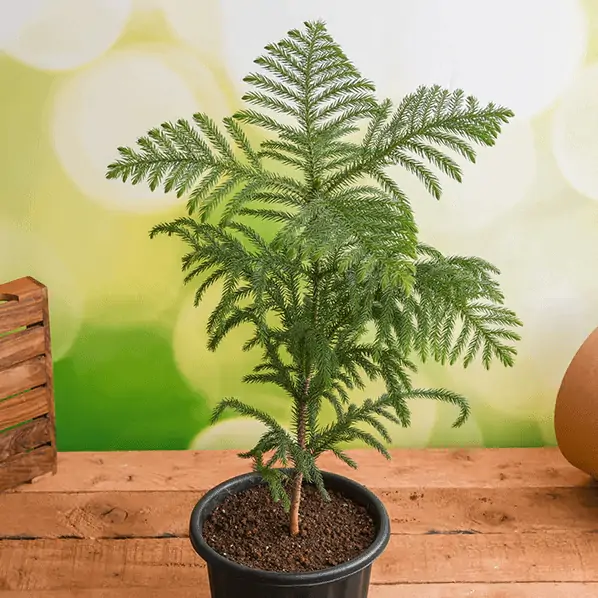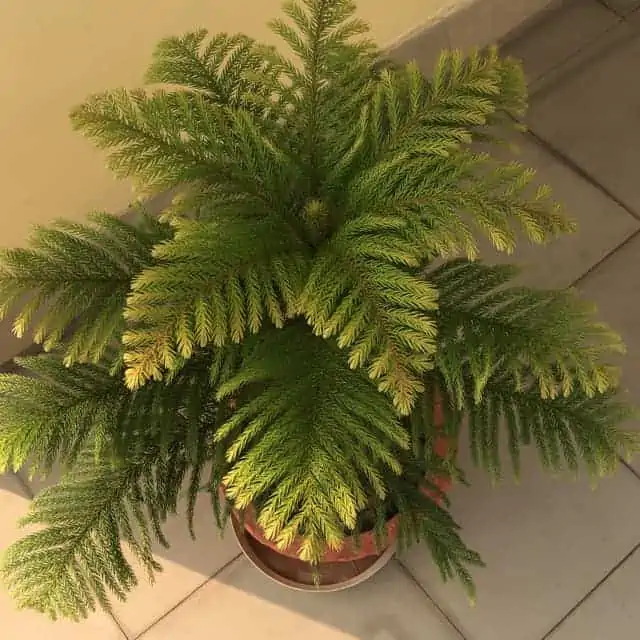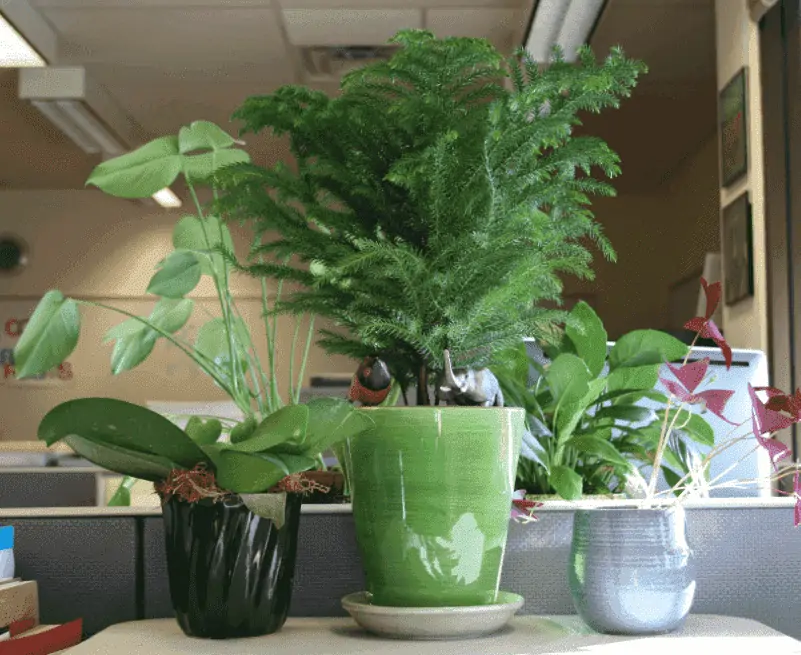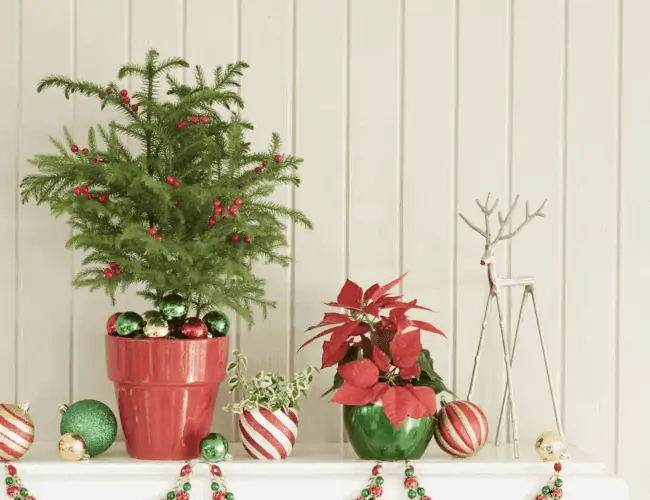The Norfolk Island pine tree is an indoor houseplant found in countries like India and the USA (especially Florida). The high demand for this indoor Norfolk Island pine tree is because it does not require a lot of care. With the right amount of light, temperature, and humid conditions, it makes your home seem lively. The plant enhances the beauty of your interiors without requiring a lot of space for its growth. It is one of the most favorite Christmas plants. In fact, in many countries, this plant is kept even when the Christmas holidays are over since it makes the home more charming.
In this article, you will get guidance about caring for the Norfolk Island pine as an indoor houseplant and ways to enhance its propagation. Also, you will get necessary information about the problems you may face while growing it as a houseplant. You will also get innovative ideas about decorating your home with the Norfolk Island pine to enhance the beauty of your home.
What is the Norfolk Island pine?
The Norfolk Island pine (scientific name Araucaria heterophylla), is an exceptionally beautiful holiday plant. The plant is easy to care for. Mostly bought around Christmas, this plant is native to Norfolk Island which is between New Zealand and Australia. In Florida, the Norfolk Island pine can attain a height of 60 to 80 feet. Though it has ‘pine’ in its name, it is not an actual pine. Instead, it belongs to the family Araucariaceae and is also called ‘Star Pine’ or ‘living Christmas tree’. Norfolk Island pine not only adds to your festive decor but makes your indoor garden greener.
The plant is slow-growing and reaches a height of 50 to 65 m when grown naturally. However, as a houseplant, the Norfolk Island pine has a smaller height even in Florida. It has symmetrical branches and straight vertical trunks with scale-like leaves. Also, the exotic beauty of this plant and its ability to adapt to different climates makes it a sought-after ornamental plant.
How to care for the Norfolk Island pine?
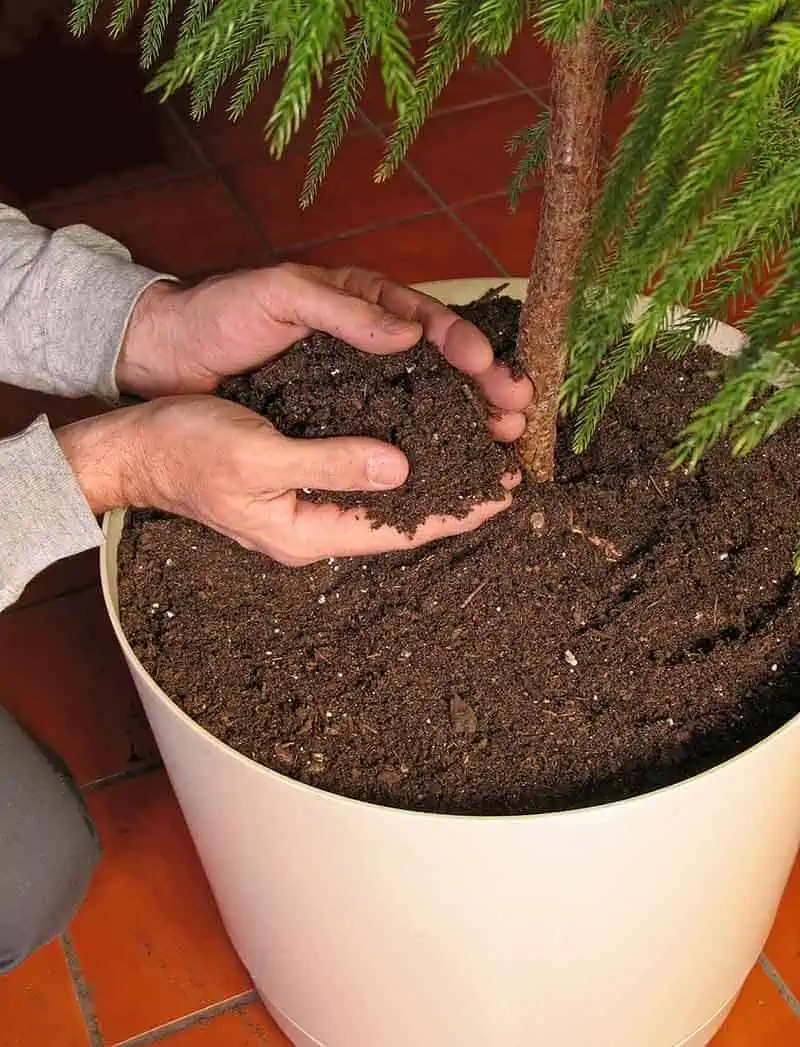
Image Source: Pennington
Light
Norfolk Island pine trees thrive in medium to high sunlight. Though it is better to keep them under high sunlight, they can also endure long periods of dim conditions. So, it gives you the choice of keeping them under the sun during the summer months, and indoors in the winter. For better growth of the plant, exposing all its parts to sunlight from time to time is exceptionally beneficial.
Soil
The Norfolk Island pine tree grows well in soils that contain higher levels of acidity. For the best growth of this indoor plant, a peat-based soil mixture is a perfect option. In this mixture, the peat breaks down which results in acidification of the soil.
Water
While watering the Norfolk Island pine tree, it is preferable to let the surface of the soil dry out a bit. This plant can survive in drought conditions and is also salt-tolerant. So, it is advised that you water the plant once every one or two weeks.
Temperature and humidity
These plants are well adapted to tropical climates, and can’t tolerate temperatures below 35 degrees Fahrenheit. Normally, they grow in temperatures ranging between 65 to 70 degrees Fahrenheit, and in wet and humid climates. Though this plant belongs to humid areas, it can still survive in dry indoor air better than most other subtropical plants. To maintain its humidity, you can also use a spray bottle to mist the plant on a regular basis.
Fertilizer
This plant does not need fertilizers during the fall or winter season and during low-light periods. Instead, the best time to use fertilizers on this plant is during its growing season in spring and summer. The best kind of fertilizer to use for the Norfolk Island pine is a water-soluble balanced fertilizer. The application of fertilizers on a regular basis makes the roots stronger. In fact, fertilizing the plants should be a major consideration, since younger plants can have weak root systems.
Propagation of Norfolk Island pine
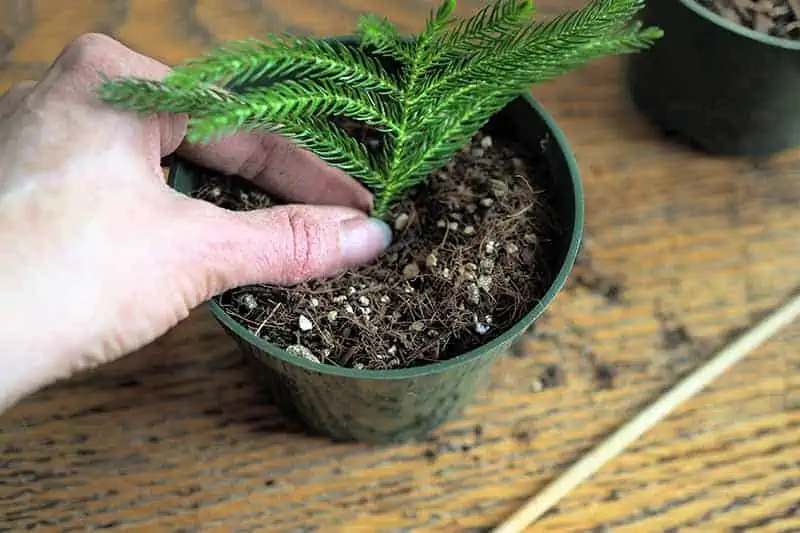
Image Source: Gardener’s Path
The graceful and evergreen Norfolk Island pines look delightful when you grow them in an indoor setting. While growing them at home for beautiful interiors, there are a few methods of propagation you can try.
Step 1 – The first step you must take to grow this charming houseplant is to collect the seeds. Generally, you can collect the seeds during their maturity period in the late summer or early autumn. To make it look even more attractive, you must avoid the method of using root cuttings for propagation. This is because the plants from root cuttings can lack branch symmetry.
Step 2 – After collecting the seeds, you need to do the plantation fast enough. For this, you may use a pot that is 31 cm deep, and place it under a shade. The best mixture of soil for its growth is an equal mixture of loam, sand, and peat. The seed’s end must be visible from above the soil, and it should be placed at an angle of 45 degrees.
Step 3 – During the early stage of the plantation, you must keep the soil damp. This will help in the sprouting of the leaves. The normal time the Norfolk Island pine seeds take to sprout can be anywhere between 12 days and 6 months.
Problems you can face with Norfolk Island pine
Common diseases of the plant
Norfolk Island pines can often get exposed to diseases like root rot, botrytis (grey mould), powdery mildew, and leaf-spot disease. People often call this plant the ‘suicide tree’. Its roots start decaying and turn brown or black in colour due to its slow growth pace. In fact, this can even happen with the Norfolk Island pine when it is in the perfect care conditions of soil and climate. The main causes of this disease are the different species of Pythium fungi. It generally happens when the soil is soggy and poorly drained. Fungi species like Fusarium and Botryosphaeria also cause another disease – top-down dieback.
Pests
Pests like aphids, scale, mites, whiteflies, and mealybugs often affect the Norfolk Island pine. If you grow this houseplant in your home, it may expose you to these pests. Often, other indoor plants at your home can bring in these pests, which will eventually affect your Norfolk Island pine.
Toxicity to cats
If a cat chews the leaves of this plant or drinks water from its pot, it can become mildly toxic to the cat. It may face skin irritation or gastrointestinal problems.
Unique Norfolk Island pine ideas for splendid interiors
The festive beauty of the Norfolk Island pine looks spellbinding with the Christmas decorations. Also, people keep it even after the holidays, due to its star-like appearance. The fresh herbal pine smell upon touching the leaves gives a natural touch to your home interiors. The calming smell and the needle-like leaves add a hint of cheerfulness to your home. Decorate it with ornaments and ribbons, or leave it as it is, the choice is yours!
Conclusion
The Norfolk Island pine is a plant of the tropical regions and prefers a hot, humid, and wet climate. The humid climate of places like Florida, Mumbai, etc. favours the growth of the Norfolk Island pine. The raw beauty of this plant adds a natural and innovative touch to your home garden. Not just during Christmas, but this plant is in rage throughout the year as well. In this article, the Norfolk Island pine decor ideas will guide you to add a luxurious touch to your home interiors. Also, you will be able to avoid the problems caused by this plant. This guide will definitely make you an expert plant parent and home decorator.
*The featured image used in this article is from Cloudinary















